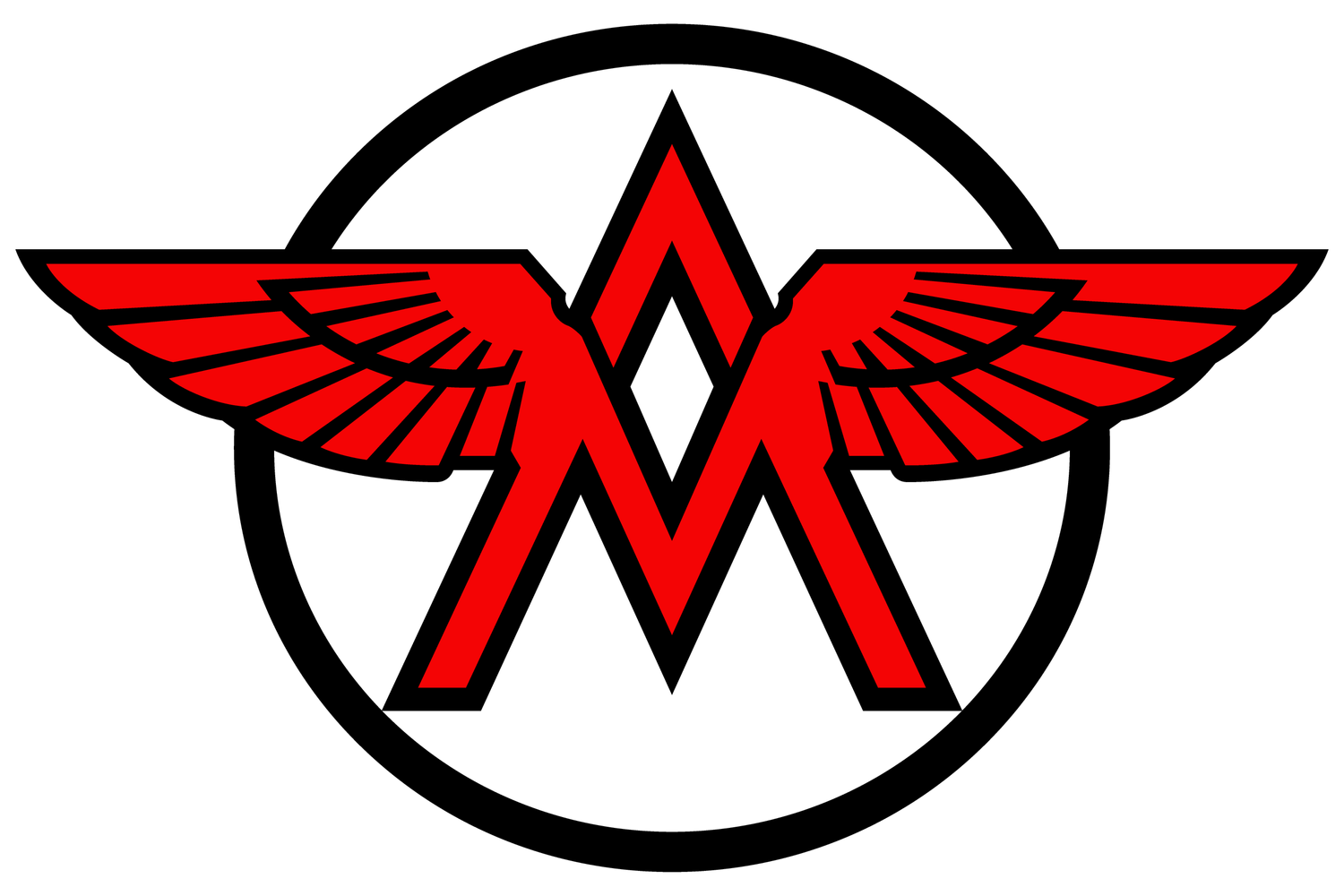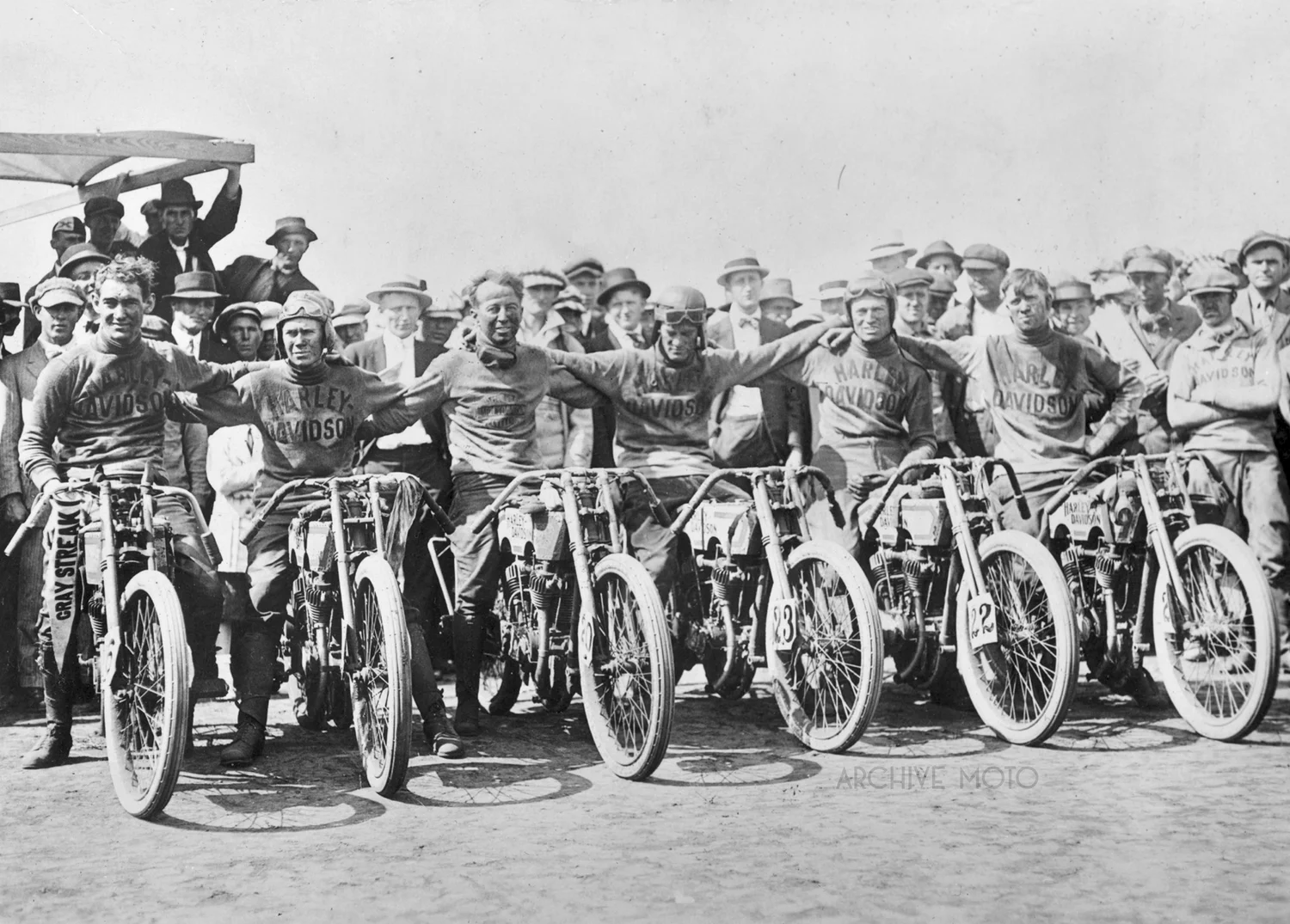Nineteen year old W.E. Hasha, aka Eddie, aka, “The Texas Cyclone” inside the Springfield Stadium Motordrome earlier in 1911 before he traveled south to race in Birmingham against Stubbs, Mitchell, Balke, and DeRosier later fall. The machine he is standing with is the one that he most likely competed on for the events at the Alabama State Fairgrounds as he acquired his monstrous and elegant 8-Valve shortly after that event, just before the start of the 1912 season in Los Angeles.
Today’s post is the conclusion of my three part series documenting the races that took place in Birmingham, Alabama, 105 years ago this week during a time of rapid change and expansion in the culture of American motorcycle racing. The series has been part of my celebration of the rich heritage of motorcycling in Birmingham as thousands of moto enthusiasts made the pilgrimage to the hallowed grounds of the Barber Motorsports Museum for the annual Barber Vintage Festival. I meant to get this final part out before the weekend, but for those of you who camp out at Barber there is too much fun being had to crack open a computer, so check out ArchiveMoto.com to read parts 1 and 2 if you need a refresher.
Come Saturday morning, Birmingham was electrified with talk about the commotion at the Hillman Hotel the night before when the world’s most famous motorcycle racer, Jake DeRosier traded blows with the city’s own beloved motorcycle racing hero Robert Stubbs. The atmosphere was undoubtedly tense and the crowd eager as Stubbs, Balke, Hasha, Mitchell, and a rather well tenderized DeRosier entered the fairgrounds Saturday to begin prepping their machines for the day’s races.
DeRosier was finally able to get his machine off of the line and pulled out a win in the second heat, but the day was Hasha’s and the young and extremely fast Texan took the 5 mile open. However, his victory was overshadowed by a bit of an an odd mishap in multitasking. During the final, Hasha bolted off of the line so quickly that the race was easily his, leaving the crowd’s excitement deflated, that was until a football player darted onto the track and in front of a wide open Charlie Balke. In an odd attempt to heighten entertainment value the promoters had staged a football match in the infield of the track during the race. Luckily Balke killed his machine, swerved, and avoided collision, but the gasp from the crowd could surely have been heard from miles around. The events during Saturday’s race, harrowing though they may have been, wouldn’t be the last of the nail biters.
No races were scheduled for Sunday, but Monday the 9th brought about a new series culminating in a 10 mile open event. Again, the Excelsior was proving to be a machine hard to beat, with Balke winning the first 3 mile heat and DeRosier the second. Stubbs was focused on bringing in another Indian victory in the day’s main event, the 10 mile, but as he charged hard on the Alabama dirt at speeds of over 70 mph his rear clincher blew, sending him over the bars and into a terrible tumble. After being rushed to the hospital initial reports surfaced that Stubbs would lose one of his eyes as a result of the incident, however the injuries proved to be less serious and Birmingham’s beloved motorcycle king would come to heal. However, a lengthy period of rest and recovery, along with growing concerns from his wife resulted in the Robert Stubbs, one of America’s first professionals retiring from the racing game, the previous week’s worth of competition were to be the last toe to toe, all out contests in the great pioneer’s career.
With Stubbs out of contention Hasha was left as the lone Indian in the mix, but despite his best efforts he couldn’t pull out a win. Balke took home the trophy in Monday’s 10 mile open and would go on to set a new 10 mile dirt track record at Thursday’s race, as well as take the trophy in the big 25 mile race on Friday, October 13th. Charlie Balke was so fast in fact, Hasha filled a protest claiming that the new Excelsior 7 could not be within spec, however after a complete teardown and inspection Friday night both Balke's and DeRosier's bikes were found to be legal. Balke’s Excelsior teammate also set a new record on Thursday the 12th in the 5 mile open, and he too took home his own 25 mile trophy on the final day of the races, Saturday, October 14th. From Birmingham DeRosier and Mitchell, who had not been able to make much of anything happen on his outmatched Thor headed to Macon for the Farmer’s Day races. Stubbs was also booked to compete but due to his eye injury did not attend. DeRosier ran away with the titles in Macon and the remainder of the events were cancelled due to rain and an impending circus which was to use the grounds.
After two weeks the run was over and the riders went their separate ways. Robert Stubbs stayed in Birmingham and maintained a very healthy Indian dealership. Though he did enter a few endurance and sidecar events over the next few years his flat out racing days were done. He did however go on to mentor young riders in the area, the most notable being the great Eugene Walker, who like Stubbs would prove to be one of the brightest stars in the Indian legacy. Arthur Mitchell continued to race, even running a prototype Harley-Davidson 11k in birmingham in 1914, but as an aging pioneer his role in early American motorcycle culture began to shift more towards the administrative side. He remained in the south and over the coming years helped to establish many of the oldest motorcycle clubs throughout the region, as well as act as a FAM ambassador and official for many of the major races throughout the teens.
By the end of October Charlie Balke was back in California racing against Joe Wolters in Sacramento, and then he moved onto the 1/2 mile wood oval in Elmhurst. Jake DeRosier headed North after his tumultuous and frustrating tour of the south, arriving in New York by Thursday October 19th and running in the races at the Guttenberg dirt track where he had another run in with former Indian teammate Frank Heart on the 29th. Following a minor scrape up in Guttenberg DeRosier headed west, back to LA for the 1912 season. It was there in the LA Stadium where, during a match race between his teammate and rival that Charlie Balke and Jake DeRosier collided on March 12th, an incident that left DeRosier severely injured for the next year. Young Eddie Hasha also headed back to Los Angeles, but before he made a stop in Springfield to pickup and dial in his newest machine. Hasha would reemerge at the LA Stadium Motordrome in February 1912 with one of the most iconic and rare racing motorcycles to have ever been built, the "Big Base" Indian 8-Valve, one of possibly only two built, and a design which would dominate American motorcycle racing for a number of years to come.
These men, the fearless, possibly even reckless pioneers of a volatile sport became the icons from a distant culture. Today we are still left in awe of their grit, but in a stark reminder of the unparalleled level of danger in which these men lived their lives it is worth noting that three of the five legendary racers from this story would be dead in less than three years after departing Birmingham. Eddie Hasha was the first of the group to go having been mangled in the horrific and now infamous catastrophe at the Vailsburg Motordrome on September 8th, 1912, less than one year after he competed in Birmingham. Jacob DeRosier, the world’s first motorcycle racing super star was next, dying February 25th, 1913, finally succumbing to the injuries acquired his collision with Balke in Los Angeles a year before, he died after a year of crippling pain and surgeries on March 12th, 1912. Finally, but by no means the last casualty of the racing game, Charlie Balke lost his life on June 8th, 1914, less than 3 years after leaving Birmingham following a collision with a horse-drawn roller during practice laps on a dirt track near Chicago. Hasha and DeRosier were both apart of the first AMA Hall of Fame inductee class in 1998, Stubbs, Balke, and Mitchell have yet to be recognized.







